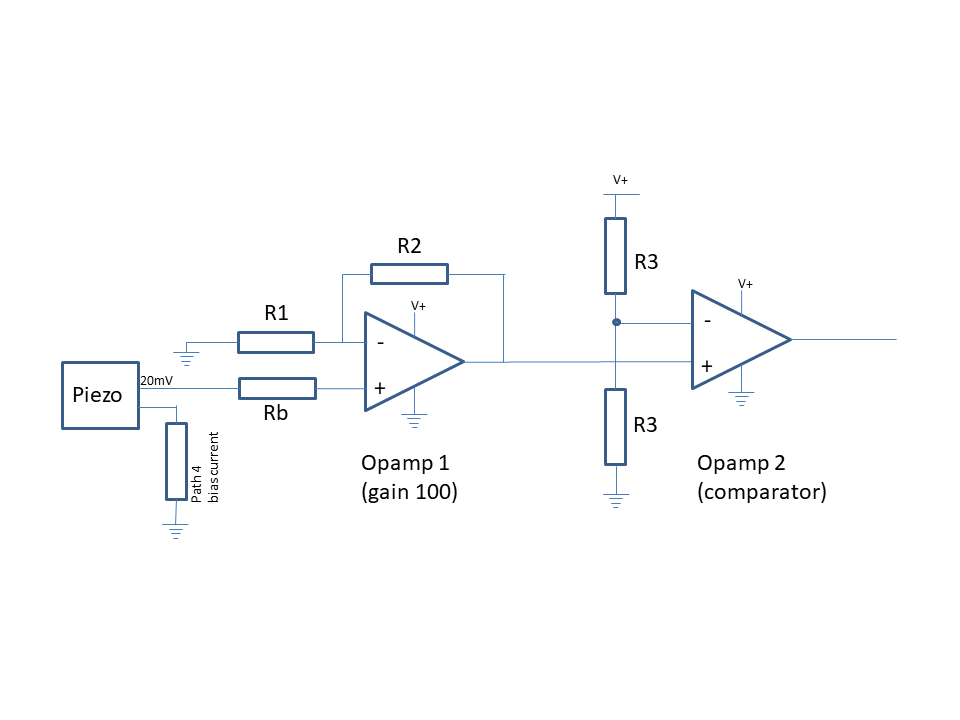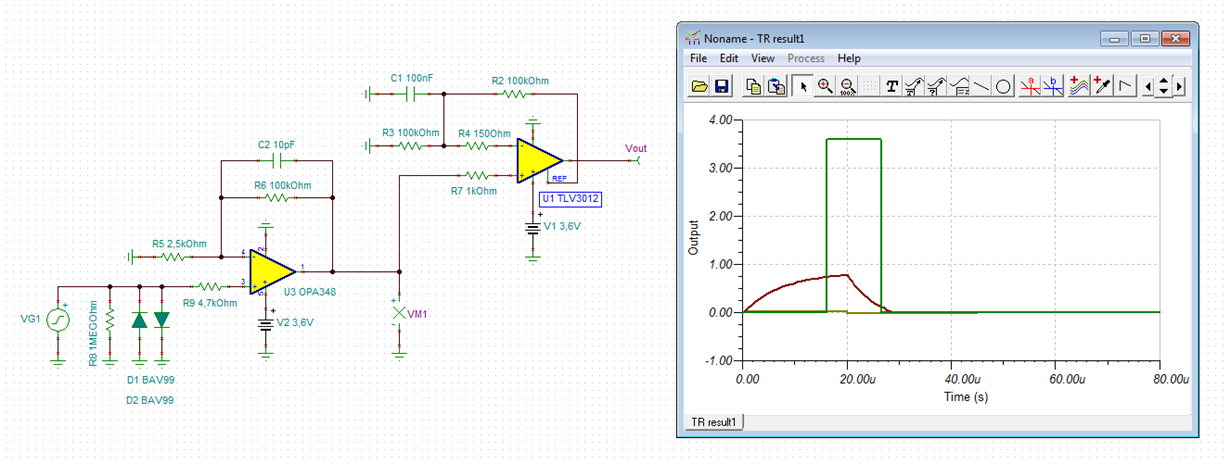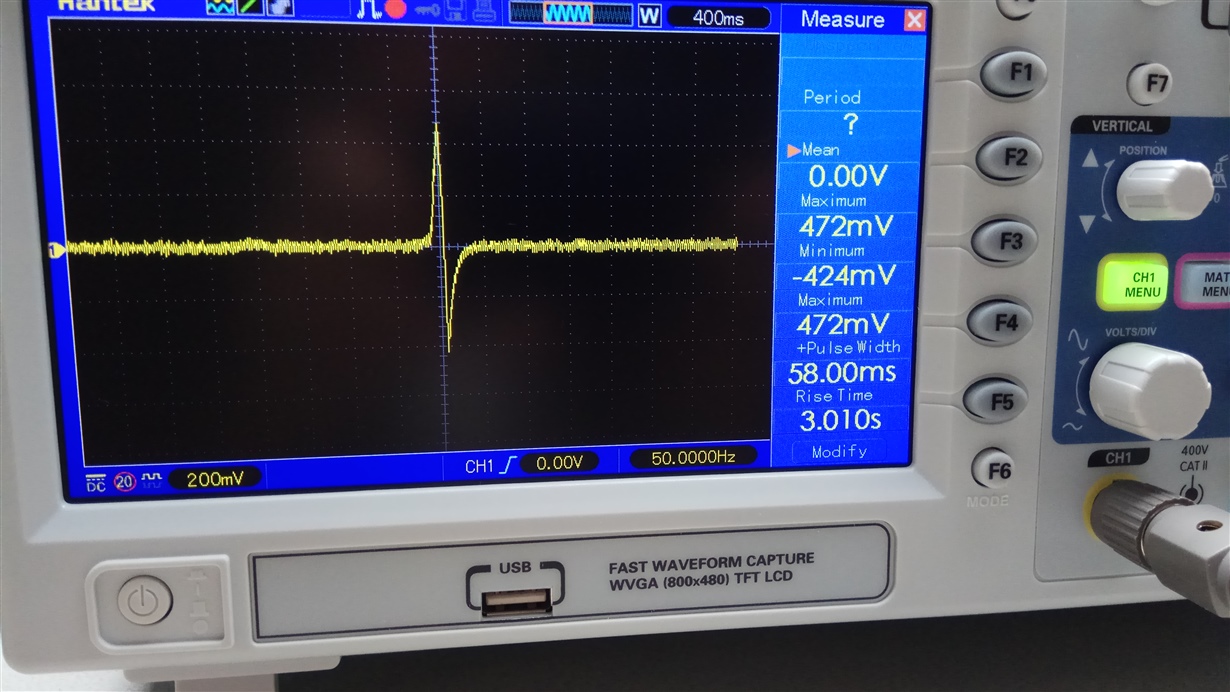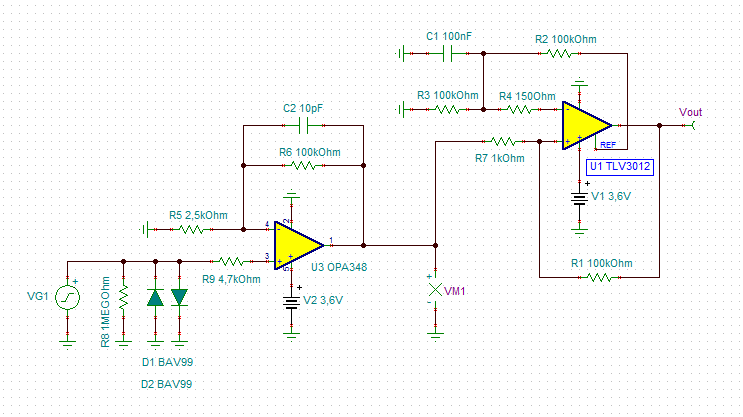Other Parts Discussed in Thread: TDC1000, TLV9002, OPA348, TLV3012, TLV8811, TLV8802, LM6134, TLC272
Hi,
We are working an a design with a piezo element. This piezo element (long cable) generate an output when it is triggered (e.g. by a car driving over it). The piezo output has to be digitalized such that it can server as an interrupt to a processor. For this I want to use 2 opamps.
The first opamp amplifies the piezo signal and the second opamp is a comparator. The output of the 2nd opamp is fed into a processor. For the opamp design the following is considered
- Piezo Sensor cable:
- Ouput varies between 20 and 50 mVs
- Opamp low power - TLV3404 (low power opamp is key as it should be possible to run on a battery)
As the piezo cable is a separate sensor I am not sure how the input bias current path could run. Have a quick sketch drawn below. As I am not an opamp designer I hope you can give me some guidance or tips how I could make this design work
Thanks a lot!






